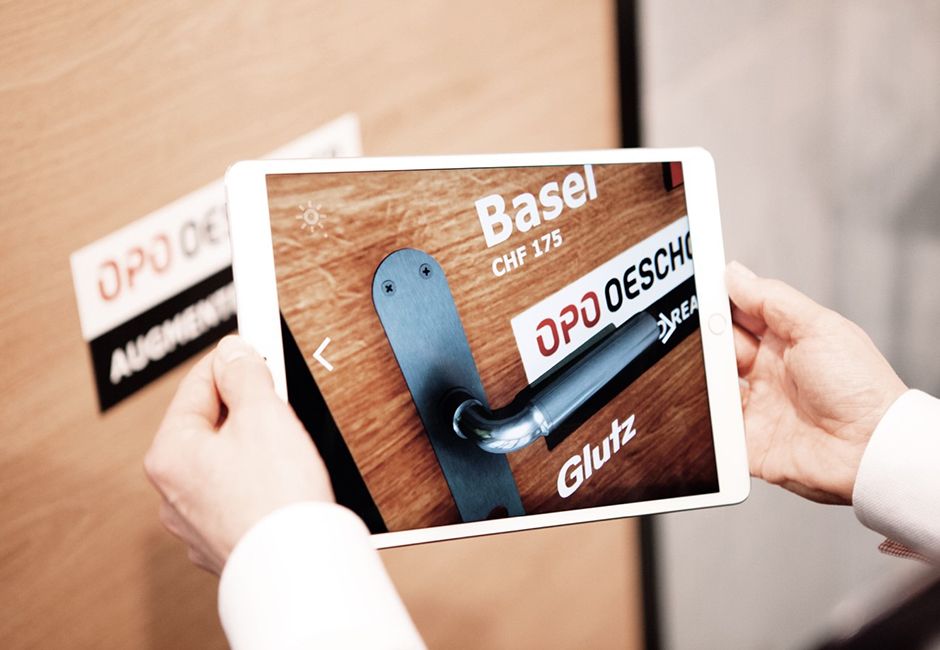Mixed Reality: Companies are seeking partners
12.04.2018 – Robert Adelmann
Specialist article for Netzwoche from April 12, 2018
The potential of augmented and mixed reality is recognised. Currently, one of the biggest challenges for companies is to build up enough expertise fast enough to deliver and scale in this exponentially fast-moving area.
One year ago, “Netzwoche" reported on the potential of Augmented Reality (AR) and how this and related technologies are gaining relevance in practice (Netzwoche number 15: «Virtual Reality in der Schweiz – eine Momentaufnahme»).
Today, it’s much more than just potential – IT service providers have seen a rapid rise in demand from the industrial sector in recent months. Companies are on the hunt for partners – not only to implement prototypes, but for real applications.
From prototypes to practice-oriented use cases
 The visualisation of products in context.
The visualisation of products in context.
Above all, the topic of mobile augmented reality with smartphones and tablets is currently particularly relevant. Compared to head-mounted displays such as the Hololens, these devices are already very widespread today. In particular, the following two applications are ripe for everyday use and in demand:
- The visualisation of products in context. One example of this is the innovation project of retailer OPO Oeschger (see photo). The application makes it possible to view items such as door handles directly in the real world – and, if you like them, to order them directly. This reduces both end-user risk and merchant-side costs, since fewer parts are returned. The application’s simplicity is a great advantage.
- Equally relevant is the use of augmented reality in an industrial context: for employee training, for the visualisation of handling instructions and installation steps directly on equipment and during maintenance.
Augmented Reality and Machine Learning
Numerous applications in the real world focus not just merely on the visualisation of information, but also on understanding the context and recognising things and devices. This is where the latest machine learning advances come into play, e.g. the Google Vision API or the Google AutoML project for extremely robust text, image, and object recognition.
Other technologies are also used and combined, e.g. Scandit for capturing multiple barcodes in images, or Vuforia for detecting and distinguishing 3-D objects, for example in the case of different device models.
Deliver quickly and scale at the same time
The swift increase in demand poses a particular challenge for IT service providers to combine fast reaction times for prototypes with the necessary internal know-how development and long-term scalability, right up to larger projects. One way to pro-actively address this challenge is via a multi-layered approach.
At Ergon Informatik, for example, a focus team is set up across departmental and team boundaries that combines mixed reality know-how and implements very fast prototypes and showcases featuring a combination of the latest technologies, business consulting and user-experience aspects. This focus team works in close consultation with larger, company-wide communities of practice for mixed reality and machine learning, as well as classic development teams that have in-depth customer and domain expertise. As a result, the focus team can respond very quickly, while at the same time building up the necessary know-how across the board and scaling it out of the established teams for larger projects.
(c) Netzmedien AG 2018, www.netzwoche.ch